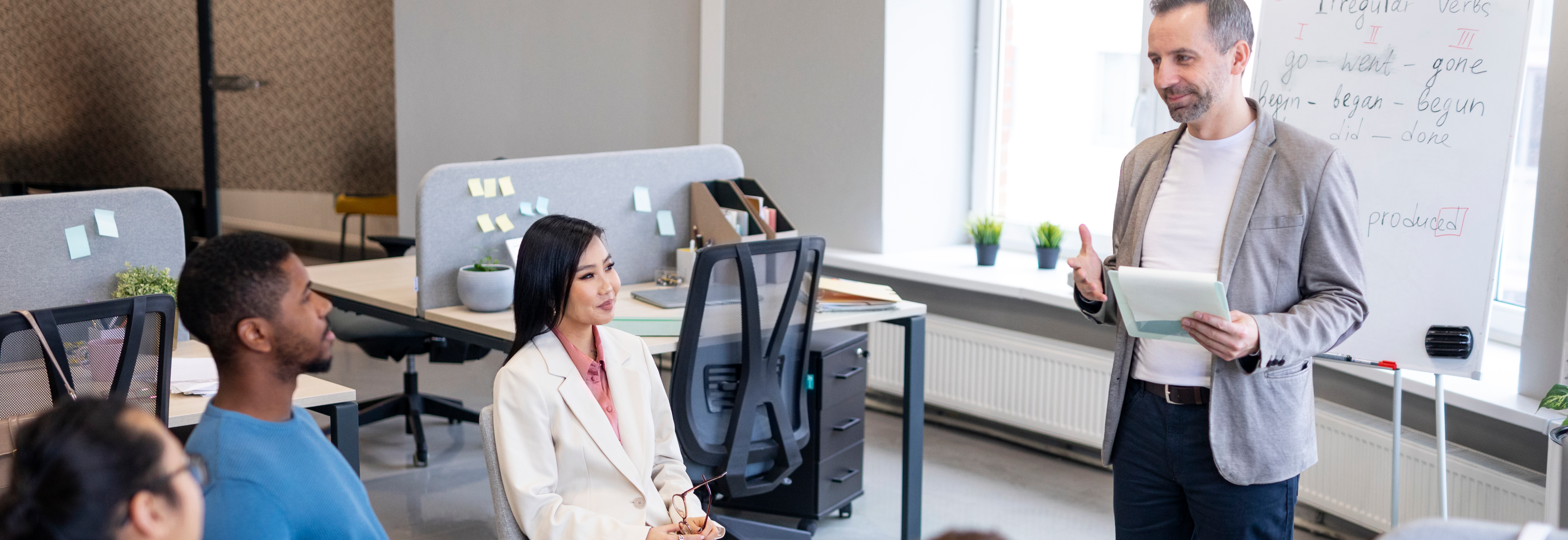The Learning Paradox: Why Traditional Training Isn’t Working
In today’s fast-paced business environment, where change is the only constant, even the most prestigious organizations grapple with a fundamental challenge: how to empower employees to translate training into action effectively.
Many companies invest heavily in learning and development programs, ranging from workshops to seminars, only to find the outcomes falling short of expectations. This learning paradox — where knowledge is gained but rarely applied — leads to inefficiencies that can stifle innovation, impact productivity, and hinder organizational growth.
The Disconnect Between Theory and Practice
Table of Contents
Consider the case of a global leader in the luxury goods industry. Employees were juggling demanding deadlines, managing multiple projects, and grappling with an endless influx of information. Despite attending time management workshops and seminars, they struggled to implement the techniques they had learned.
The gap was glaring. Employees could articulate concepts like prioritization and effective scheduling but found it nearly impossible to apply these in their daily roles. This inefficiency not only affected individual productivity but also limited the company’s agility in responding to market opportunities.
This challenge isn’t unique to one company. Across industries, many organizations face the same issue: how to bridge the gap between learning and doing.
For companies to maintain a competitive edge in such a dynamic landscape, they need solutions that go beyond traditional training methods. A more strategic, immersive, and personalized approach to employee development is essential.
From Problem to Solution: A Case in Point
A global premium spirits brand, featured in this case study, sought to address this exact challenge. With iconic offerings like Jim Beam and Yamazaki, their commitment to excellence was undisputed. Yet, when it came to time management, their employees faced similar struggles — translating theoretical knowledge into practical results.
Recognizing this critical gap, the company partnered with FocusU to implement an innovative and immersive solution: the Time Trek Challenge.
The Time Trek Challenge was a game-changing intervention that transformed how employees approached time management. It went beyond imparting theoretical knowledge by creating an engaging, gamified learning environment. Employees participated in simulated office scenarios where they practiced prioritization, delegation, and adapting to changing priorities — skills crucial for their roles.
This approach not only helped employees understand concepts like the Eisenhower Matrix and “Eat That Frog” but also gave them the confidence to experiment with these strategies in a risk-free, virtual setting.
The Shift Toward Immersive Learning
Traditional training often emphasizes knowledge acquisition over practical application. Participants may leave workshops with extensive notes but little idea of how to apply what they’ve learned. Immersive learning, on the other hand, flips this script.
The Time Trek Challenge was structured to:
1. Engage Employees Actively
By gamifying time management strategies, participants became active learners, deeply involved in solving real-world challenges.
2. Provide a Safe Learning Environment
Employees experimented with different approaches without fear of real-world consequences, fostering creativity and adaptability.
3. Tailor the Experience
Participants chose virtual characters aligned with their roles, allowing them to personalize the learning experience and identify their unique strengths and weaknesses.
This interactive format bridged the gap between knowing and doing, making time management strategies more accessible, practical, and impactful.
The Broader Implications for Learning and Development
The luxury goods company’s journey underscores a larger truth: the nature of work has changed, and so must the way we approach learning. In a world where disruptions are constant and demands are high, organizations need to adopt agile learning methodologies that prepare employees to act decisively and effectively.
Why traditional training often fails:
1. One-size-fits-all approaches
Employees have unique roles and challenges that generic training sessions rarely address.
2. Lack of practical application
Learning stops at theory, leaving participants without the tools or confidence to apply what they’ve learned.
3. No reinforcement
Without follow-up or opportunities to practice, lessons fade quickly.
What organizations need instead:
(i) Experiential learning
Programs like the Time Trek Challenge create relatable and memorable experiences that stick with employees long after the session ends.
(ii) Continuous development
Training should be an ongoing process, incorporating real-world scenarios and feedback loops.
(iii) Personalization
Tailored programs that address individual strengths and growth areas ensure a higher return on investment.
Reimagining Corporate Learning
The learning paradox is a solvable problem, as the case of the luxury goods brand demonstrates. With immersive, innovative solutions, companies can empower their teams to close the gap between knowing and doing.
The results of the Time Trek Challenge speak for themselves. Employees reported increased confidence, clarity, and control over their work. They gained not only time management skills but also a deeper understanding of their personal working styles and energy management, which paved the way for lasting behavioral change.
For companies looking to transform their workforce, the question isn’t whether to invest in learning and development but how to do so effectively. The answer lies in embracing methods that prioritize application, engagement, and adaptability.
Don’t let the learning paradox hold your company back. The future of training is here, and it’s all about bridging the gap between theory and practice.










